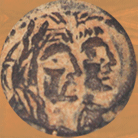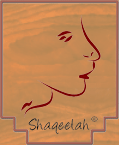









Aesthetic and Design Vision
The basic notion of this production unit was generated from the way
Bait Al-Anbat envisions the importance of contemporary cultural industries. Its role expresses the identity codes in a way that undoubtedly creates a strong sense of reciprocal respect between the producers and consumers of culture and the urgent need for the sustainability, maintenance, and preservation of culture. This can be fulfilled through changing it to a valuable producer by local societies from which they benefit. Therefore, the project of Bait Al-Anbat (Shaqilat Complex for Cultural Industries) is concerned mainly with providing a set of cultural products relevant to tourism through relying on local communities in accordance with a special aesthetic vision and dimension.
Aesthetic Dimension:
The aesthetic dimension of the products of Dar Shaqilat springs from the spirit of originality and Jordanian contemporariness along with its human horizons. The products of Dar Shaqilat aim at bridging the gap of aesthetics through the following determinants:
1- Redefining the codes of the cultural identity of
2- Innovations and creativity of the originality
3- Communication with the present and modernism
Elements of the Aesthetic and Design Vision:
The aesthetic dimension relies heavily on the following elements:
1- Arab Nabataean Civilization:
It offers a cultural storehouse, marked with wealth, various artistic and cultural codes as is reflected by the Nabataean arts, left behind over five centuries, and implied by Nabataean architecture, sculpture, pottery, industry, agriculture, spiritual and religious life:
-
Decoration of
diagonal lines on 45 degree angles.
- Doric Frieze: It consists of three flat vertical bands with gaps between them.
- Cornices: the Nabataean cornice is one of the prominent symbols of the Nabataean arts. There are two kinds: the first is the Nabataean or classical cornice without decoration, the latter Corinthian or garlandlike.
- Symbols of sculptures and statues: through focussing on the prominent factors such as the clothes, the flat nose, the eyes with iris emerging from the eye socket, hair styling, where hair straightens helically.
-
Symmetry and asymmetry of artistic masses.
2- Heritage of other civilizations which Jordan witnessed from the First Stone Age to civilizations of Moab, Edomites and Ammonites of the Iron Age. These local cultures are replete with a huge cultural and symbolical storehouse which adds to the aesthetic vision of contemporary products which Dar Shaqilat offers.
3- Arabic Calligraphy:
The Nabataean letter is considered the first root of the Arabic letter. Through their historical development until the Arabic letters, they convey the holiness of aesthetic symbolism, subject to reformation in the contemporary products. Needless to say, Arabic-Nabataean Calligraphy is instrumental in restructuring the embroidery and the various forms of other products. We can benefit from the inscriptions of everyday life and graffiti, scattered in the Jordanian desert in the form of a productive parallel line, marked with mystery and unique apparent identity.
4- Jordanian contemporary popular culture:
As far as fashion is concerned, the folkloric dimension can benefit from the available knowledge of its symbolism, the local colors related to occasions of using specific dress and decoding implications of their decorative units. In addition, it can benefit from the development of the functions of clothes through social eras, examined during the last two centuries. Cultural space in which society made clothes during the last two centuries contributes to offering another symbolism, with aesthetic privacy through changing the tangible and intangible cultures to material symbols, carried through new aesthetic line. This spreads in tales, ideas, songs, and popular proverbs, which appear around the culture of local clothes.
